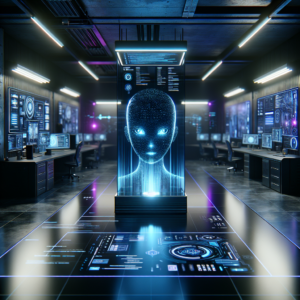AI Hallucinations Can’t Be Stopped — But These Techniques Can Limit Their Damage
Artificial Intelligence (AI) has become an integral part of numerous sectors, from healthcare to finance, and its impact continues to grow exponentially. However, as we embrace these advancements, we are also starting to encounter the darker sides of AI technology, notably the phenomenon known as “AI hallucinations.” This term refers to instances where AI models generate outputs that are plausible but factually incorrect or nonsensical. Today, we will explore the implications of these hallucinations and discuss techniques that can be employed to mitigate their effects.
Understanding AI Hallucinations
AI hallucinations occur primarily due to the nature of machine learning models. These models are trained on vast datasets which include both accurate and inaccurate information. As they learn patterns within the data, they can sometimes produce responses based on flawed logic or incorrect associations.
The Origins of AI Hallucinations
The inception of these hallucinations can be traced back to several key factors:
– Data Quality: The quality of the training data is paramount. If the dataset contains inaccuracies or biases, the AI is likely to reproduce these errors in its outputs.
– Model Complexity: More complex models, while typically more powerful, can also lead to unexpected results. As the model tries to generalize from its training data, it may draw connections that do not exist, leading to hallucinations.
– Ambiguity in Input: AI systems often rely on user input to generate responses. If the input is vague or ambiguous, the model may “hallucinate” a response that appears relevant but is ultimately misleading.
The Consequences of AI Hallucinations
The risks posed by AI hallucinations can be significant, particularly in high-stakes environments. For instance, in healthcare, a diagnostic AI that produces incorrect results could lead to improper treatment decisions. Similarly, in legal settings, an AI that misinterprets existing laws can lead to incorrect legal advice or judgments.
These errors not only undermine the credibility of AI systems but also pose ethical and legal challenges. As AI continues to evolve, addressing these hallucinations is of utmost importance.
Techniques to Limit the Damage of AI Hallucinations
While it is impossible to eliminate AI hallucinations entirely, there are several strategies that developers and users can implement to reduce their occurrence and mitigate their impact.
1. Enhance Data Quality
One of the most effective ways to combat AI hallucinations is by ensuring high-quality training data. This involves:
– Data Cleaning: Regularly audit and cleanse datasets to remove inaccuracies and biases.
– Diverse Data Sources: Utilize diverse datasets to provide the AI model with a broad understanding of contexts and scenarios.
– Continuous Updates: Regularly update the training data to reflect current facts and trends, thus minimizing outdated or incorrect information.
2. Implement Robust Testing and Validation
Before deploying an AI system, rigorous testing and validation are crucial. This includes:
– Performance Metrics: Establish clear metrics to evaluate the AI’s performance against known benchmarks.
– Stress Testing: Simulate various scenarios to see how the AI responds, particularly with edge cases or ambiguous inputs.
– User Feedback: Incorporate feedback mechanisms where users can report inaccuracies, thereby helping to refine the model further.
3. Utilize Explainable AI (XAI)
Explainable AI provides insights into how AI models make decisions. By utilizing XAI techniques, developers can:
– Increase Transparency: Offer users a clearer understanding of the AI’s outputs, including the reasoning behind specific responses.
– Identify Errors: Quickly pinpoint where a hallucination may have occurred and adjust the model accordingly.
– Build Trust: By being transparent about how the AI operates, users are more likely to trust its outputs.
4. Employ Human Oversight
Integrating human oversight into AI processes can significantly mitigate the risks associated with hallucinations. Humans can:
– Verify Outputs: Professionals can review and verify AI-generated outputs, especially in critical scenarios.
– Provide Context: Humans can offer context that the AI may miss, improving the relevance and accuracy of the responses.
– Adjust Models: Human intervention may be necessary to adjust AI models in light of new information or changing contexts.
5. Continuous Learning and Adaptation
AI systems should not be static; they need to learn continuously from new data and experiences. Techniques for achieving this include:
– Reinforcement Learning: Allowing the AI to learn from feedback provided based on its performance can lead to better accuracy over time.
– Real-time Learning: Implementing systems that adapt in real-time as new data is introduced can help minimize errors.
– Regular Model Updates: Periodically revising and updating the AI model can ensure it stays relevant and reduces the chances of hallucinations.
The Future of AI and Hallucinations
As AI technologies continue to advance, the challenge of hallucinations will persist. However, by understanding their origins and employing strategic techniques to limit their impact, we can create more reliable and trustworthy AI systems.
The collaboration between AI developers, researchers, and end-users will be crucial in addressing these challenges. It is not just about creating intelligent systems but also ensuring that these systems adhere to ethical practices and provide accurate information.
In conclusion, while AI hallucinations cannot be completely eradicated, the implementation of quality data management, robust testing, human oversight, and continuous learning can significantly limit their damage. As we navigate through this evolving landscape of artificial intelligence, these strategies will be essential in fostering a future where AI can be trusted to perform its intended functions accurately and responsibly.



